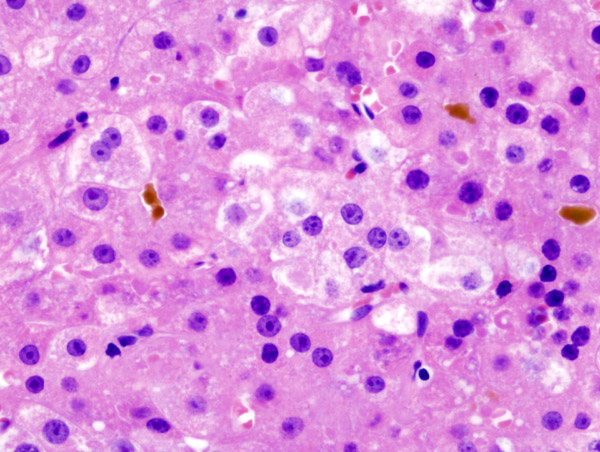Researchers have discovered a new way to combat heapatitis C, a chronic liver infection linked to cirrhosis and cancer.
Writing in Science, Southwest National Primate Research Center scientist Robert Lanford and his colleagues show how a new drug, SPC3649, was able to dramatically suppresses hepatitis C in experimentally-infected chimpanzees.
 The agent is a short nucleotide (genetic) sequence, which is the mirror image of a short piece of genetic material called micro RNA 122 (miR-122) which is found normally in liver cells but is also critical for hepatitis C viruses to grow. But after it is administered intravenously, SPC3649 enters liver cells and binds to miR-122, triggering the liver cells to remove it and in the process depriving any hepatitis C viruses of access.
The agent is a short nucleotide (genetic) sequence, which is the mirror image of a short piece of genetic material called micro RNA 122 (miR-122) which is found normally in liver cells but is also critical for hepatitis C viruses to grow. But after it is administered intravenously, SPC3649 enters liver cells and binds to miR-122, triggering the liver cells to remove it and in the process depriving any hepatitis C viruses of access.
In the experimental animals the levels of the virus fell 350-fold when the agent was given over a 12 week period and, under a microscope, liver biopsies from the treated animals showed signs of significant improvement. Encouragingly, the researchers also found no evidence of ill-effects in the animals throughout the trials, and nor did the virus show any signs of developing resistance to the treatment.
Hepatitis C affects about 170 million people worldwide, spreads through transfusions with contaminated blood and needle sharing and over 80% of those infected develop chronic life-long infections which ultimately lead to liver cirrhosis and cancer. At the moment there are very few effective therapies. According to Robert Lanford, "the current standard anti-hepatitis C treatment is effective in only about 50% of patients and is often associated with severe side effects. Because the unique mechanism of action of SPC3496 and its tolerability profile, this new therapy could have the potential to replace [existing therapies] or be combined with current treatments."
The team are now launching a clinical trial to test the effectiveness of the new agent in hepatitis C-infected humans.










Comments
Add a comment